
NGC 4473 is an elliptical galaxy located about 50 million light-years away in the constellation of Coma Berenices. It was discovered by astronomer William Herschel on April 8, 1784. NGC 4473 has an inclination of about 71°. NGC 4473 is a member of a chain of galaxies called Markarian's Chain which is part of the larger Virgo Cluster of galaxies.
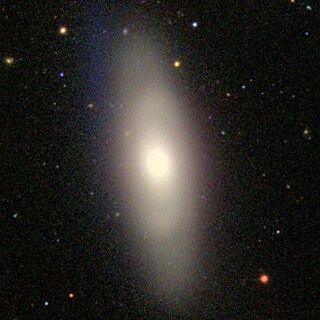
NGC 4461 is a lenticular galaxy located about 50 million light-years away in the constellation of Virgo. It was discovered by astronomer William Herschel on April 12, 1784. NGC 4461 is a member of Markarian's Chain which is part of the Virgo Cluster.

NGC 4489 is a dwarf elliptical galaxy located about 60 million light-years away in the constellation of Coma Berenices. It was discovered by astronomer William Herschel on March 21, 1784. NGC 4489 is a member of the Virgo Cluster.

NGC 4459 is a lenticular galaxy located about 50 million light-years away in the constellation of Coma Berenices. NGC 4459 is also classified as a LINER galaxy. NGC 4459 was discovered by astronomer William Herschel on January 14, 1787. NGC 4459 is a member of the Virgo Cluster.
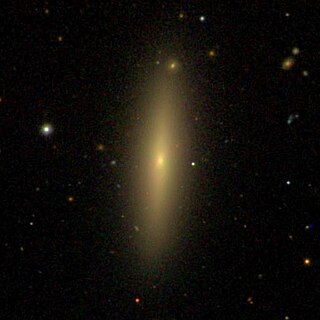
NGC 4623 is an edge-on lenticular or elliptical galaxy located about 54 million light-years away in the constellation of Virgo. NGC 4623 is classified as an E7, a rare type of "late" elliptical that represents the first stage of transition into a lenticular galaxy. NGC 4623 was discovered by astronomer William Herschel on April 13, 1784. NGC 4623 is a member of the Virgo Cluster.

NGC 4633 is a spiral galaxy located about 70 million light-years away in the constellation of Coma Berenices. It is interacting with the nearby galaxy NGC 4634. NGC 4633 was discovered by astronomer Edward D. Swift on April 27, 1887. It was rediscovered on November 23, 1900, by astronomer Arnold Schwassmann and was later listed as IC 3688. NGC 4633 is a member of the Virgo Cluster.

NGC 4873 is a lenticular galaxy located about 270 million light-years away in the constellation of Coma Berenices. NGC 4873 was discovered by astronomer Heinrich d'Arrest on May 10, 1863. The galaxy is a member of the Coma Cluster.
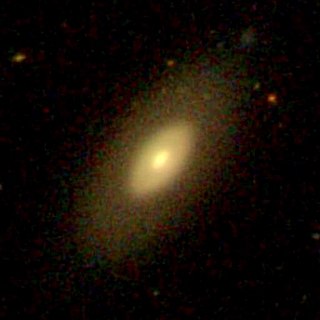
NGC 4919 is a lenticular galaxy located about 340 million light-years away in the constellation of Coma Berenices. NGC 4919 was discovered by astronomer Heinrich d'Arrest on May 5, 1864. NGC 4919 is a member of the Coma Cluster.

PGC 44691 is a spiral galaxy located about 350 million light-years away in the constellation Coma Berenices. It belongs to a galaxy cluster known as the Coma Cluster. In 1994, the Hubble Space Telescope observed PGC 44691 and the nearby elliptical galaxy NGC 4881 to infer the distance to the Coma Cluster.

NGC 4907 is a barred spiral galaxy located about 270 million light-years away in the constellation of Coma Berenices. It is also classified as a LINER galaxy. NGC 4907 was discovered by astronomer Heinrich d'Arrest on May 5, 1864. The galaxy is a member of the Coma Cluster, located equidistant between NGC 4928 and NGC 4829.

NGC 4479 is a barred lenticular galaxy located about 60 million light-years away in the constellation of Coma Berenices. NGC 4479 was discovered by astronomer William Herschel on April 8, 1784. It is a member of the Virgo Cluster.
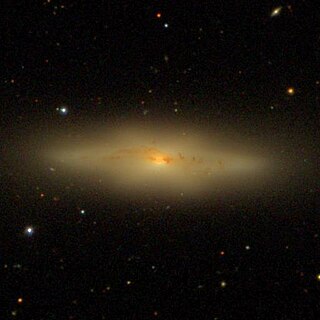
NGC 4469 is a nearly edge-on spiral galaxy located about 55 million light-years away in the constellation of Virgo. It is also classified as a LINER galaxy. NGC 4469 was discovered by astronomer William Herschel on April 15, 1784. It is a member of the Virgo Cluster.
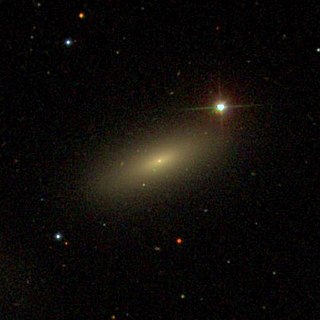
NGC 4436 is a lenticular or dwarf elliptical galaxy located about 60 million light-years away in the constellation of Virgo. NGC 4436 was discovered by astronomer William Herschel on April 17, 1784. The galaxy is a member of the Virgo Cluster.

NGC 4474 is an edge-on lenticular galaxy located about 50 million light-years away in the constellation Coma Berenices. NGC 4474 was discovered by astronomer William Herschel on April 8, 1784. It is a member of the Virgo Cluster.

NGC 4476 is a lenticular galaxy located about 55 million light-years away in the constellation Virgo. NGC 4476 was discovered by astronomer William Herschel on April 12, 1784. The galaxy is a member of the Virgo Cluster.

NGC 4478 is an elliptical galaxy located about 50 million light-years away in the constellation Virgo. NGC 4478 was discovered by astronomer William Herschel on April 12, 1784. NGC 4478 is a member of the Virgo Cluster.

NGC 4498 is a barred spiral galaxy located about 50 million light-years away in the constellation Coma Berenices. NGC 4498 was discovered by astronomer William Herschel on March 21, 1784. NGC 4498 is a member of the Virgo Cluster.
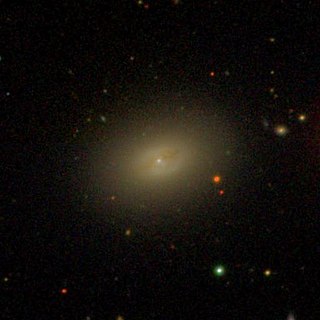
NGC 4506 is a spiral galaxy located around 50 million light-years away in the constellation Coma Berenices. It is classified as peculiar due to the presence of dust that surrounds its nucleus. NGC 4506 was discovered by astronomer William Herschel on January 14, 1787. It is a member of the Virgo Cluster.

NGC 4515 is a lenticular galaxy located about 57 million light-years away in the constellation Coma Berenices. NGC 4515 was discovered by astronomer William Herschel on March 21, 1784. The galaxy is a member of the Virgo Cluster.

NGC 4876 is an elliptical galaxy located about 325 million light-years away in the constellation Coma Berenices. NGC 4876 was discovered by astronomer Guillaume Bigourdan on May 16, 1885. NGC 4876 is a member of the Coma Cluster.




















